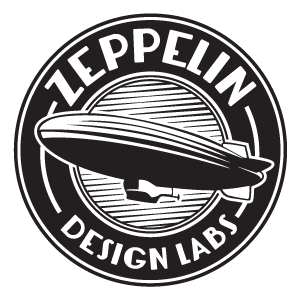Home › Forums › Altura Theremin MIDI Controller Forum › Altura User Reviews › Review After Using my Altura for a Few Days
- This topic has 9 replies, 2 voices, and was last updated 3 years, 4 months ago by
Coffeepal.
-
AuthorPosts
-
Coffeepal
GuestThis thing is magnificent. It offers an entirely different way of thinking about playing melody, or at least that’s been one takeaway I’ve had lately. One thing I really love about this so far is that I’ve also been able to connect it easily to 3 of my easiest and most familiar devices: my computer, a couple old Yamaha keyboards with MIDI in. It totally brought new life to the keyboards, has restored the fun in playing them. I don’t yet know how precisely one coan control this thing, or how well. I wonder if it has much latency, I believe some sensors introduce a significant lag but I don’t know if this does. I guess I can look it up easily enough. I think I may try using paddles or something to more precisely control the thing, I don’t know for sure yet if it’s even necessary. I have yet to even try running this through some of my favorite modulation effects but I’ve got high expectations right now. If I can never play it with a high precision, it would still be great.
I have pretty standard computer hardware, a decent Lenovo with plenty of RAM and a UA25-EX for my audio/MIDI interface, and I’m running my Altura into the MIDI there, running REAPER on the laptop. I’ve been playing all night with some old favorite free VSTs: Phobos 2, Superwave, Oatmeal, Hard Boiled Wonderland, and they’ve all responded really well to the input from the Altura. I’m really enchanted.
Coffeepal
GuestOh, I hit record a couple times and put it up on soundcloud. Here is a semirandom sample of what this thing can do with a Yamaha PSS-48, a Yamaha PSR-795, and REAPER.
zdlAdmin
KeymasterCoffeepal, thanks for the review. The only significant (measurable) latency in the Altura system would be the speed of sound in air. The sensors send out a chirp and listen for an echo off your hand. The further out you play, the longer the distance and thus the longer the latency. Also, speed of sound in air changes with temperature and pressure. The Altura will be a little more responsive in New Hampshire in February and a little more sluggish in Baton Rouge in August.
Another type of latency occurs when you quickly pull your hand out of the sensor beam. If the sensor hears no echo after a timeout, it sends a note-off message. You can perceive this delay if you listen for it.
A third phenomenon involves our use of “bins.” Please watch the Altura deep-dive video on our YouTube channel for a detailed explanation. In short, to improve stability the software tries to create a zone, or bin, around your hand once it has decided what note you are trying to play. Nudging your hand to the next adjacent note then takes a delicate “touch” and some practice. You may percieve what seems like latency, but actually the software conditions for sending a new note simply haven’t been met yet. Once the conditions are met, the note sounds instantly.
Last, the “articulation” value can be adjusted to fine tune sensitivity. See the reference manual for details. Again, this does not add or reduce latency per se; it makes the software more or less willing to send new note messages. At low values, the device becomes extremely responsive — which means more unintended notes. At high values, it takes its time to decide where your hand is, averaging sensor readings and discarding data fluctuations. The result is much more stable performance, but the device becomes less responsive to small movements of your hand.Coffeepal
Guest
A third phenomenon involves our use of “bins.” Please watch the Altura deep-dive video on our YouTube channel for a detailed explanation. In short, to improve stability the software tries to create a zone, or bin, around your hand once it has decided what note you are trying to play. Nudging your hand to the next adjacent note then takes a delicate “touch” and some practice. You may percieve what seems like latency, but actually the software conditions for sending a new note simply haven’t been met yet. Once the conditions are met, the note sounds instantly.
Last, the “articulation”Well my impression RN is that this machine may not be able to be played by moving your hands in and out of its field rapidly. I’m still playing around with it. One of my next things is to put a bike wheel in front of the right sensor and put some cards in the spokes and see what kind of responsiveness I can get. But I’m still just trying to find all the sweet spots for this gadget.
I really appreciate your detailed answer. I plan on modding this device a good bit and I’m hoping you guys will be there for me. This thing is the bomb.
Coffeepal
GuestAnd hell, let me explain so my post above doesn’t sound so negative. When I say “move my hands in and out of the field rapidly,” I mean in a perpendicular fashion.
Coffeepal
GuestLast night I finally tried connecting my Boss MD-500 to the Altura. I’m still not positive how I got it to work but I had to go to the manual a couple of times. The Altura can now control the rate and depth of an effect running on the MD-500 – and it’s a multi-effect unit with a big array of them — which is the utter bomb. Not all effects pedals have MIDI in but the latest series from Boss I think does with all of them. So the Altura really wins on interoperability with other hardware, IMO. I feel like the biggest roadblock to my progress over the years with electronic music has been that most of the hardware in my price range all have issues working with one another or simply don’t. I’m really happy to see that the Altura does not have such problems.
Coffeepal
GuestAnd I have finally gotten around to trying it with my Casio LK-45. The “LK” stands for Lighted Keys, and each key has a red LED on the underside of it to make it glow when pressed. But they also glow when the controller gets MIDI notes for that key, as well. So I can easily play any of the voices and have visual feeedback as well, the size of my keyboard. Nice.
zdlAdmin
KeymasterTHAT is AWEsome.
Coffeepal
ParticipantI also did the same with a Yamaha EZ-30 I think is the model, it’s a really nice plastic keyboard, has like 670 voices. And now I’ve tried using an Altura with a Behringer TD-3, and learned that you don’t have to use the sequencer functions, you can just use the nice midi controlled synth, which has a lot of cool voices. And this evening I’ve been playing a Yamaha PSS-795, a really old model that really works well with the Altura and has a lot of neat features. I’m making some mad sounds over here.
Coffeepal
ParticipantI am so tickled by this thing I’m going to have to try building another. If I had a single feature I’d like to request in some future model it would be to have the rate for the sequencer have a way to control it precisely and maybe have a display of it on the numeric. But it is really fun with this old Yamaha and it’s also worked with every cheap old Yamaha and Casio I’ve tried, in addition to an old Roland PX-10 I tried it with.
-
AuthorPosts


